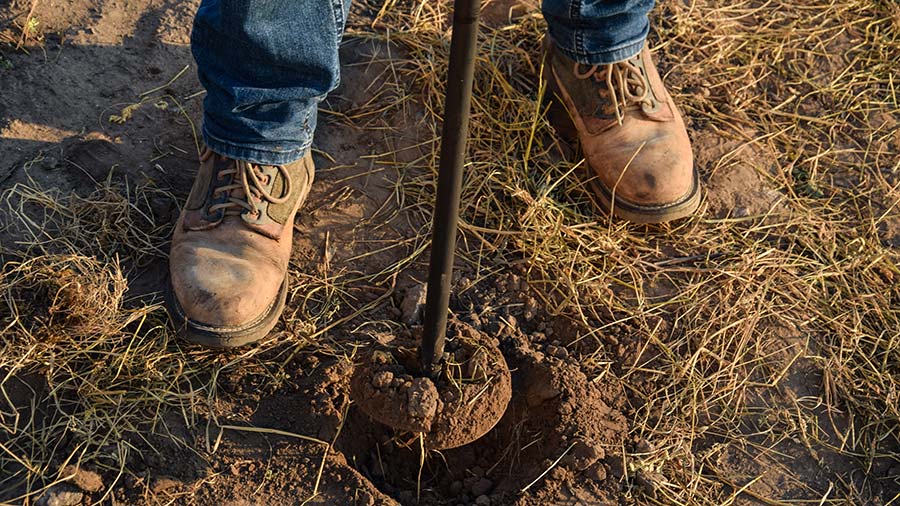Agronomist tips on taking reliable soil samples this autumn
 © AdobeStock/AlDa.videophoto
© AdobeStock/AlDa.videophoto Taking soil samples this autumn will only produce useful data for a nutrient management plan if it is done consistently.
This means sampling at the same time of year, in exactly the same place, and under the same field conditions.
According to agronomist Dr Sajjad Awan, of soil testing laboratory NRM, although growing numbers of farmers are submitting soil specimens for analysis, most are not taking repeat samples from the same places in a field.
“People do not remember exactly which part of the field they have sampled before. Soils across a field are highly variable, metre by metre,” he says.
See also: A guide to soil mapping and variable-rate fertiliser
To establish whether soils are building up, or declining, in key nutrients over time, Sajjad points out that samples must be compared like-with-like over a period of 10-20 years to generate good-quality data.
“You can quickly replace N [nitrogen] in soils, but not P [phosphorus] – once the soil is rundown to an index of 0, it may take five to 10 years to get phosphorus levels back up to index 1.”
He thinks farmers can make use of technology to help them measure, record, and compare their results effectively. Geo-referencing is a good way to identify where to sample.
“There is a very good app called What3words and lots of software you can now use to know exactly where you last sampled,” he says.
Sampling conditions
To be able to repeat the process accurately another year, Sajjad stresses the importance of recording conditions at the time of sampling, because these make a significant difference to the results.
Ideally, collecting soil when there is moisture and some warmth will produce the best results. This may mean timing of sampling will vary from farm to farm.
Sajjad explains that microbial activity is lower at soil temperatures below 5C. It speeds up above 8C and mineralises more nutrients such as N and P.
“Dry and cold conditions can make a massive variation in index values,” he says, adding that samples taken in such conditions can produce a lower P index within the same field than those taken when it is moist and warm.
To log sampling conditions and store test results for easy evaluation, Sajjad advises using a phone or other mobile device.
This is essential when vast amounts of data are involved and will help create a bigger picture of nutrient flow on farm.
Nutrient balance
Apart from losses to the atmosphere and leaching through water, most nutrient flow in the environment is constantly recycled, he says.
Livestock farmers will, therefore, benefit from measuring crop off-take (nutrients stored in the harvested plant) as on an arable farm, by analysing green herbage, not just clamped forage.
“Maize and grass remove nutrients that are not replaced after harvesting for silage. Knowing the nutrient off-take values helps calculate a farm nutrient balance.
It also avoids applying nutrients when you do not need them,” he says.
Blood and milk tests from livestock complete the picture, relating nutrient inputs to animal health and production efficiency.
However, Sajjad recognises there is a “massive” gap in free, independent advice to help understand and correlate all of this information.
“NRM can supply liming and fertiliser recommendations in t/ha and kg/ha, but only if farmers supply us with sufficient information. Otherwise, we have to make assumptions,” he says.
While there are free industry tools, such as RB209 and Manner-NPK, Sajjad thinks farmers will have to consider the cost benefit of paid-for advice and says that a Facts-trained (Fertiliser Advisors Certification and Training Scheme) agronomist would be a good start.
